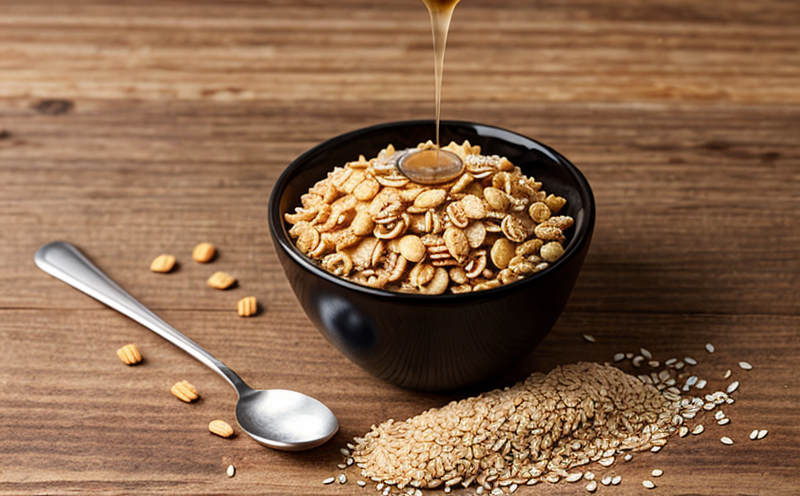ISO 32587 PCB Detection in Fish and Shellfish Validation Method Development Test
The International Organization for Standardization (ISO) has developed a new standard, ISO 32587:2021, aimed at the validation of analytical methods used in detecting polychlorinated biphenyls (PCBs) in fish and shellfish. This service is designed to ensure that laboratories adhere to this international standard, which provides a robust framework for validating analytical procedures used in environmental and food safety contexts.
Polychlorinated biphenyls are synthetic organic compounds known as persistent environmental pollutants, meaning they can accumulate over time without being degraded by natural processes. Their presence in fish and shellfish is of significant concern due to their bioaccumulation potential and toxicity. ISO 32587 outlines the steps required for method validation ensuring accuracy, precision, linearity, and robustness.
The service involves a comprehensive approach that begins with an initial consultation to understand the specific requirements of our clients. This includes identifying the target species, expected PCB concentrations, and any regulatory compliance issues pertinent to the testing environment. Our team then develops a tailored validation protocol based on ISO 32587 guidelines.
Once the protocol is established, we proceed with the method development process which involves:
- Sample preparation
- Solution calibration
- Laboratory instrument selection and optimization
- Data acquisition and analysis
- Statistical evaluation of results
The sample preparation phase is critical to ensure the integrity of the test. This involves the correct extraction techniques for PCBs, which can vary depending on the type of fish or shellfish being tested. Commonly used solvents include hexane and dichloromethane. Calibration solutions are prepared according to ISO 32587 specifications using certified reference materials.
The selection of laboratory instruments is based on accuracy, precision, and robustness as outlined in the standard. Liquid Chromatography-Mass Spectrometry (LC-MS/MS) is frequently used due to its high sensitivity and selectivity for PCBs. The method development process also includes extensive data analysis using multivariate statistical techniques such as linear regression and least squares.
The final step of the validation process involves rigorous testing with real samples under controlled conditions. This ensures that the analytical procedure meets all criteria set forth in ISO 32587, including accuracy within ±10%, precision (repeatability)
Upon successful validation, we provide clients with detailed reports documenting all aspects of the method development process along with recommendations for future improvements or adjustments if necessary. Our services are particularly valuable for quality managers, compliance officers, and R&D engineers responsible for ensuring that their analytical methods comply with international standards like ISO 32587.
Why It Matters
The detection of PCBs in fish and shellfish is crucial not only from an environmental perspective but also due to public health concerns. PCBs have been linked to various health issues including developmental delays, reproductive disorders, liver diseases, and cancer when consumed by humans. Therefore, ensuring that analytical methods for detecting these compounds are validated according to ISO 32587 helps maintain the reliability of food safety data.
Compliance with this standard is not only important from a regulatory standpoint but also enhances consumer confidence in the products being sold. By adhering to international standards like ISO 32587, laboratories can demonstrate their commitment to quality and accuracy, thereby fostering trust among stakeholders including regulators, suppliers, buyers, and end consumers.
Moreover, this service supports ongoing research efforts aimed at understanding PCB behavior in aquatic ecosystems. Validated analytical methods play a pivotal role in monitoring trends over time and assessing the effectiveness of mitigation strategies implemented by governments worldwide.
For quality managers and compliance officers, ensuring that their laboratory practices align with ISO 32587 ensures they are meeting both internal and external expectations regarding food safety standards. R&D engineers benefit from this service as it enables them to develop more accurate and reliable methods for detecting PCBs in complex matrices like fish and shellfish.
In summary, the importance of validating analytical methods according to ISO 32587 cannot be overstated given its role in safeguarding public health while supporting environmental protection initiatives globally.
Industry Applications
- Fisheries Management: Ensuring that seafood products meet safety standards and regulatory requirements.
- Environmental Monitoring: Tracking PCB levels in aquatic environments to assess pollution impacts.
- Regulatory Compliance: Providing data necessary for compliance with international regulations related to food safety and environmental protection.
- R&D: Supporting innovative research into safer alternatives and improved detection techniques.
The ability to accurately detect PCBs is essential across these sectors, making ISO 32587 a vital tool for maintaining high standards of food safety and environmental integrity.
Why Choose This Test
Choosing our ISO 32587 PCB Detection in Fish and Shellfish Validation Method Development service offers several advantages:
- Expertise & Experience: Our team comprises experts with extensive experience in environmental analysis, food safety testing, and method development.
- Comprehensive Support: From initial consultation to final report, we provide full support throughout the entire validation process.
- State-of-the-Art Equipment: Utilizing advanced instrumentation like LC-MS/MS ensures precision and reliability in our results.
- Regulatory Compliance: By adhering strictly to ISO 32587, we ensure that all tests meet the highest industry standards.
- Custom Solutions: Each validation protocol is tailored specifically for your unique needs ensuring optimal performance.
- Data Integrity: We employ robust quality control measures to guarantee accurate and consistent results.
Our commitment to excellence has made us a trusted partner in the field of environmental and food safety testing. Partnering with us ensures that you are receiving top-tier services backed by years of experience and cutting-edge technology.





